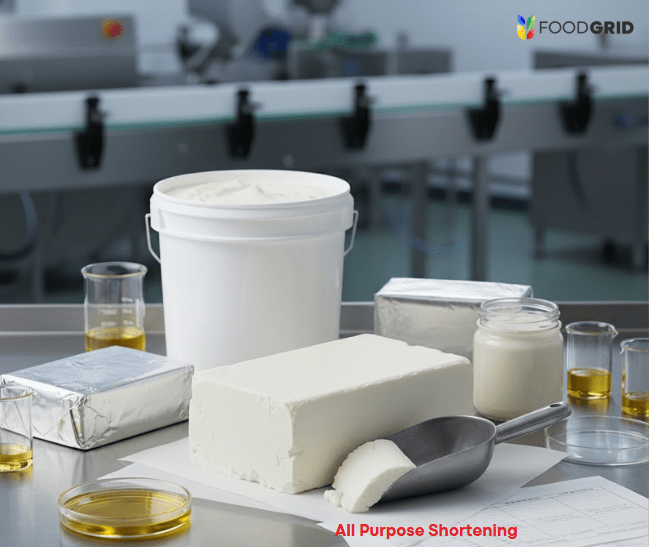When production lines are humming and ingredients seem to perform “well enough,” it’s easy to miss the silent profit killers lurking in your formulations. But here’s the truth: inconsistent or low-quality fats can erode margins far beyond their purchase price. From rework and rejects to equipment inefficiency and batch variability, every inconsistency in fat quality compounds hidden costs throughout your operation.
In the competitive world of mid-market food production, where output consistency equals brand reputation, “good enough” fats are costing more than most realize. Let’s unpack why.
How Poor Fat Consistency Increases Rework and Rejects
When fats vary from batch to batch, your production line pays the price — not in pennies, but in hours of rework, lost yield, and damaged product integrity.
- Texture and Structure Failures
Fats are critical to texture formation in baked goods, pastries, and snack applications. Even a small deviation in melting point or crystallization rate can cause spread issues, density changes, or poor lamination. These inconsistencies lead to rejects that don’t meet visual or sensory standards.
- Process Instability
If your shortening doesn’t behave predictably during mixing, frying, or cooling, you end up spending more time recalibrating machinery and rebalancing formulations. Production stops for manual adjustments — adding downtime and cost.
- Cumulative Impact
Each minor deviation might seem trivial, but across hundreds of runs per year, they translate to significant inefficiency. According to a study by the Institute of Food Technologists (IFT), small ingredient inconsistencies can lead to a 3–7% loss in operational efficiency across food manufacturing lines.
Quantifying the True Cost of “Cheap” Ingredients
Procurement often focuses on the per-pound price of shortening or fat, but the cheapest option rarely offers the best total cost of ownership.
| Cost Factor | Hidden Impact |
| Downtime & Rework | Reprocessing or cleaning after fat separation or breakdown |
| Yield Loss | Poor aeration, uneven dough spread, or oil absorption |
| Shelf Life Reduction | Faster oxidation and rancidity from unstable fat sources |
| Brand Risk | Product inconsistency leads to consumer complaints or delistings |
When you account for these variables, the “cheap” fat can end up costing 15–30% more per batch than a premium, well-controlled alternative.
Example:
A 10,000 lb/day bakery using a low-cost shortening might save $0.10/lb at purchase — $1,000/day on paper. But if fat variability increases rejects by even 2%, that’s 200 lbs lost daily. Add 2 hours of downtime per week for rework, and those savings vanish.
Over a year, that’s $40,000–$60,000 in hidden costs, not including brand damage or staff overtime.
Testing Shortening for Stability, Consistency, and Yield
Quality fats aren’t just about taste or texture — they’re about performance predictability. Regular testing and data-driven controls are your best defense against hidden losses.
- Oxidative Stability
Measure peroxide and anisidine values to determine how quickly a fat oxidizes. Unstable oils degrade faster, impacting flavor, shelf life, and fry life.
- Solid Fat Content (SFC) Curves
SFC analysis helps understand crystallization and melting behavior — the backbone of texture control. Tight SFC specifications ensure uniform plasticity and consistency across runs.
- Consistency and Yield Testing
Batch-to-batch testing for viscosity, hardness, and yield provides insight into how fats perform under production conditions. Real-world tests often reveal differences that paper specifications miss.
- Contaminant and Adulteration Screening
Cheap ingredients are more prone to adulteration with lower-cost oils. Advanced chromatographic testing (e.g., GC or HPLC) can identify unwanted substitutions that compromise quality or labeling integrity.
For a deeper look at food fat testing standards, see reputable resources from the U.S. Department of Agriculture (USDA) and the American Oil Chemists’ Society (AOCS).

The Business Case for Premium Shortening
Switching to premium shortening isn’t a luxury — it’s a strategic move to protect ROI.
- Predictable Performance
Premium shortenings undergo tighter process controls, ensuring consistent SFC profiles and oxidation resistance. This predictability reduces rework, stabilizes throughput, and ensures repeatable product quality.
- Higher Yield
Well-formulated fats often require less usage per batch while delivering better aeration, lift, or spread. That means lower cost per finished pound even if the input price is higher.
- Equipment Longevity
Stable shortenings reduce polymer buildup and gumming in fryers, extruders, and mixers. That translates into less downtime and fewer maintenance hours.
- Operational ROI
Companies using high-performance shortenings often report a 4–8% improvement in overall equipment effectiveness (OEE) due to fewer stoppages and adjustments. In mid-market production, that can mean tens of thousands of dollars annually.
“ROI on ingredient quality isn’t measured in cents per pound — it’s measured in hours saved and customers retained.”
FoodGrid’s Commitment to Quality Control and Batch Tracking
At FoodGrid, we understand that every pound of shortening represents more than an ingredient — it’s a promise of consistency, efficiency, and trust.
- Rigorous Quality Control
Our fats and shortenings undergo comprehensive quality assurance testing before leaving the facility. Each batch is validated for:
- Solid fat content and crystallization behavior
- Oxidative stability and shelf-life integrity
- Color, odor, and consistency under controlled conditions
- End-to-End Batch Tracking
FoodGrid’s quality control process uses a digital traceability system that links every batch back to its origin. This allows your QA and procurement teams to:
- Access batch-level data instantly
- Trace quality deviations in minutes
- Simplify audits and supplier compliance documentation
- Continuous Process Monitoring
Real-time data analytics help us maintain consistency across large-scale production runs — ensuring that what you receive today will perform exactly like what you used last quarter.
- Collaborative Quality Partnerships
We don’t just sell fats — we partner with your production and QA teams to test and validate performance in your specific applications. Our technical team can help you model savings, optimize yield, and document fat performance ROI for procurement justification.
Learn more about our ingredient solutions and how they can improve your efficiency and product consistency.
Calculating Fat Performance ROI
Let’s look at how premium fat quality translates into measurable ROI.
| Factor | Cheap Shortening | Premium Shortening (FoodGrid) | ROI Impact |
| Batch Variability | ±10% texture variation | ±2% consistency | Less rework, better brand consistency |
| Yield Loss | 2–3% | <0.5% | +1.5–2.5% finished goods yield |
| Shelf Life | 4–6 months | 8–10 months | Lower returns, better market reach |
| Fryer Stability | Breaks down after 15 hours | Stable for 30+ hours | 2× fry life = lower cost per cycle |
| Downtime for Cleaning | Weekly | Bi-weekly or longer | 50% less downtime |
Over a 12-month cycle, even a 3% improvement in yield or uptime can translate to six-figure annual savings — all driven by consistent fat quality and performance.

Reducing Risk with Data-Driven Ingredient Procurement
In today’s volatile ingredient markets, procurement isn’t just about finding suppliers — it’s about finding partners with verifiable quality systems.
- Batch-Level Data
Having access to batch data allows QA teams to validate incoming ingredients faster, reducing the lag between receipt and production release.
- Supplier Consistency Metrics
FoodGrid provides suppliers with Consistency Index Scores — a metric based on stability, yield, and performance data across production runs.
- Audit Readiness
With automated documentation and traceability, your QA and procurement teams are always audit-ready, with traceable data that stands up to BRC, SQF, or FSMA inspections.
For more insight, visit our traceability and quality tracking overview.
Moving Beyond “Good Enough”: A Smarter Approach to Ingredient ROI
Ingredient cost optimization should focus on value retention, not just cost reduction.
High-quality fats maintain performance consistency, reduce yield losses, and sustain production efficiency — all of which protect your bottom line.
The Hidden Formula for ROI:
(Ingredient Stability + Process Consistency + Reduced Downtime) ÷ Ingredient Cost = True ROI
That’s where FoodGrid’s shortening quality control and fat performance ROI approach redefine what procurement value means.
References
- Institute of Food Technologists (IFT) – “Operational Efficiency in Food Processing”
- U.S. Department of Agriculture (USDA) – Food ingredient quality guidelines
- American Oil Chemists’ Society (AOCS) – Fat and oil stability testing standards
- Food and Drug Administration (FDA) – Ingredient labeling and food safety compliance
Measure the ROI of Your Fats Today
Don’t let “good enough” fats quietly drain your profits. Partner with FoodGrid to test your current shortening performance and see where hidden costs are impacting your ROI. Request a sample here.
👉 Contact our team to schedule a fat performance assessment today.
